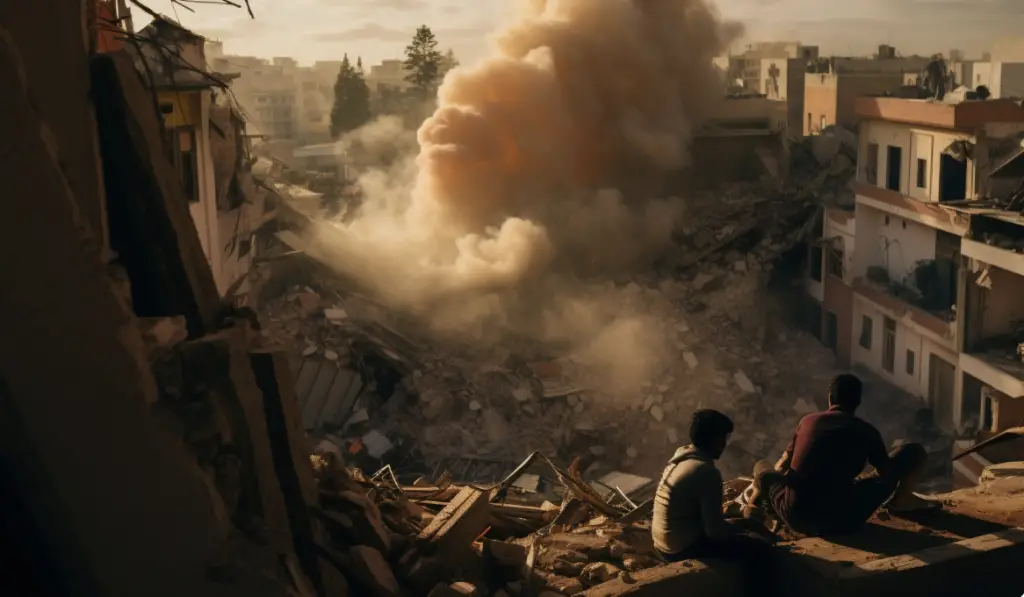
When disaster strikes, every second counts. Whether it’s a terrorist attack, a hurricane, a pandemic, or a cyberattack, the ability to respond quickly can save lives, protect infrastructure, and restore order. The United States has long recognized this, which is why it has developed detailed emergency response playbooks designed to guide rapid execution at what is known as “zero hour”—the moment a crisis begins.
These playbooks are not just manuals; they are lifelines built from experience, coordination, and continuous improvement. Used by the military, FEMA, public health officials, and local governments, they are crucial for aligning actions across agencies, levels of government, and even the private sector. Each one is designed for speed, clarity, and control under extreme pressure.
This article examines the structure and operation of these US emergency playbooks, highlighting how they are put into action and the valuable lessons they impart about swift, informed, and efficient crisis response.
1. The Origins of Emergency Playbooks
The concept of a structured emergency response in the US dates back to early military operations and civil defense efforts during World War II. During the Cold War, the need for rapid response planning became even more apparent. The threat of nuclear war led to the creation of government continuity plans and national-level drills. These early versions laid the groundwork for what would become modern emergency playbooks.
After 9/11, the US entered a new era of strategic preparedness. Homeland Security was created, FEMA was restructured, and the concept of an all-hazards approach took shape. This approach emphasized planning not for specific events but for categories of crises, allowing response teams to pivot regardless of the cause.
Key milestones in the evolution of emergency playbooks include:
- The National Response Framework (NRF): A guide for how the nation responds to all types of disasters.
- The Incident Command System (ICS): A standardized, flexible command structure used across agencies.
- Continuity of Operations Plans (COOP): Plans that ensure essential functions continue during a disruption.
Each of these frameworks forms a part of the broader strategy designed to enable seamless execution the moment disaster hits.
2. Anatomy of a US Emergency Playbook
An emergency playbook is a highly detailed guide that outlines specific actions to take during a crisis. Though they vary depending on the agency or scenario, most share several key components:
- Chain of Command: A clear hierarchy of decision-making.
- Communication Protocols: Methods for fast and accurate information sharing.
- Logistics Plans: How to deploy people, gear, medicine, and supplies.
- Checklists and Action Cards: Step-by-step guides for responders.
- Timeframes: Timed objectives to ensure every minute is optimized.
For example, FEMA’s emergency operations plan includes detailed instructions for how quickly shelter and aid should be delivered post-disaster. It outlines roles for each partner: local first responders, the National Guard, federal logistics teams, and even private companies.
Playbooks also rely heavily on scenario-based modeling. These are simulations based on past events and “what-if” analyses. They allow teams to practice in advance and fine-tune their responses under pressure.
Technology plays a big role, too. Real-time dashboards, emergency alerts, and GIS mapping help visualize the crisis as it unfolds. Decision-makers can track resource movement, identify bottlenecks, and adapt plans instantly.
Ultimately, the goal is not perfection but rapid momentum—moving from chaos to coordination in minutes.
3. Zero-Hour in Action: Real Case Studies
Hurricane Katrina (2005)
Katrina exposed major flaws in coordination, communication, and execution. Although playbooks existed, they were either outdated or ignored. Response delays led to unnecessary loss of life. The breakdown between local, state, and federal agencies became a cautionary tale of what happens without clear command chains.
The 9/11 Terror Attacks (2001)
In contrast, the 9/11 response showcased quick execution under pressure. The FAA grounded all flights within minutes. NORAD and local law enforcement activated their emergency protocols instantly. First responders, despite losing communication systems, used training and improvisation to evacuate thousands from the World Trade Center.
COVID-19 Pandemic (2020-2022)
The global pandemic highlighted both the strengths and weaknesses of US emergency playbooks. Early confusion gave way to a massive vaccine rollout and coordinated public health campaigns. The strategic use of Defense Production Act, mass testing sites, and public-private partnerships proved how long-term playbooks could still adapt to evolving situations.
Boston Marathon Bombing (2013)
The response to this terror attack was rapid and unified. Law enforcement locked down the city, coordinated manhunts, and neutralized suspects within days. The public also followed instructions promptly, showing the importance of trust in leadership.
California Wildfires (Annual)
Each year, wildfires trigger fast evacuations across the West Coast. Local governments, using geofenced alerts and reverse-911 systems, move tens of thousands in hours. These playbooks are revised annually based on the previous year’s burn patterns and evacuation challenges.
These examples underline one thing: execution speed comes from preparation, rehearsal, and trust.
4. Decision-Making Under Pressure
Leaders during emergencies often face incomplete information, time pressure, and emotional strain. Despite this, they must act. US playbooks offer cognitive frameworks to aid decision-making:
- The OODA Loop (Observe, Orient, Decide, Act) helps leaders focus quickly.
- Red Teams challenge assumptions before final decisions.
- Pre-authorized authority allows decisions without lengthy approval chains.
Training for high-pressure leadership includes simulations, role-play, and even mindfulness exercises. Resilience and clarity are as vital as information.
One example is the use of Unified Command in wildfire incidents, where multiple leaders share decision-making power but operate from the same playbook. This reduces friction and speeds up response.
In short, calm minds in chaotic times are forged through practice and planning.
5. Technology and Tools Behind Zero-Hour Execution
Modern crisis response leans heavily on digital infrastructure:
- Real-Time Dashboards: Used by FEMA and state EOCs for resource tracking.
- Emergency Alert Systems: Push notifications and sirens for public updates.
- AI and Predictive Analytics: Forecast resource needs or outbreak hotspots.
- Geospatial Tools: Used for mapping flood zones, fire paths, or evacuation routes.
- Inter-agency Communication Tools: Secure networks like FirstNet or Homeland Security Information Network (HSIN).
The key to all these tools is interoperability. Agencies must use systems that “talk” to each other to avoid siloed responses.
One standout example is the use of drones and thermal imaging in search and rescue missions during hurricanes. Live data helps responders adjust their tactics in real time.
Technology does not replace human judgment but sharpens it.




Leave a Reply